Ice Cores in New Zealand
In 2009 after a number of years of preparation and exploration, I assisted GNS Scientist Uwe Morgenstern in attempts to drill ice cores at several locations in the Aoraki Mt Cook National Park. My role was to manage logistics, to help with planning and preparing the equipment.
Our reconnaissance efforts had involved lots of trips up into the mountains over several years, as well as many meetings with glaciologists, poring over maps and also flying over the mountains in a plane to choose potential drilling sites.
The photo shows a ground penetrating radar being dragged over the Annette Plateau in a grid pattern to measure cross sections of the ice thickness.
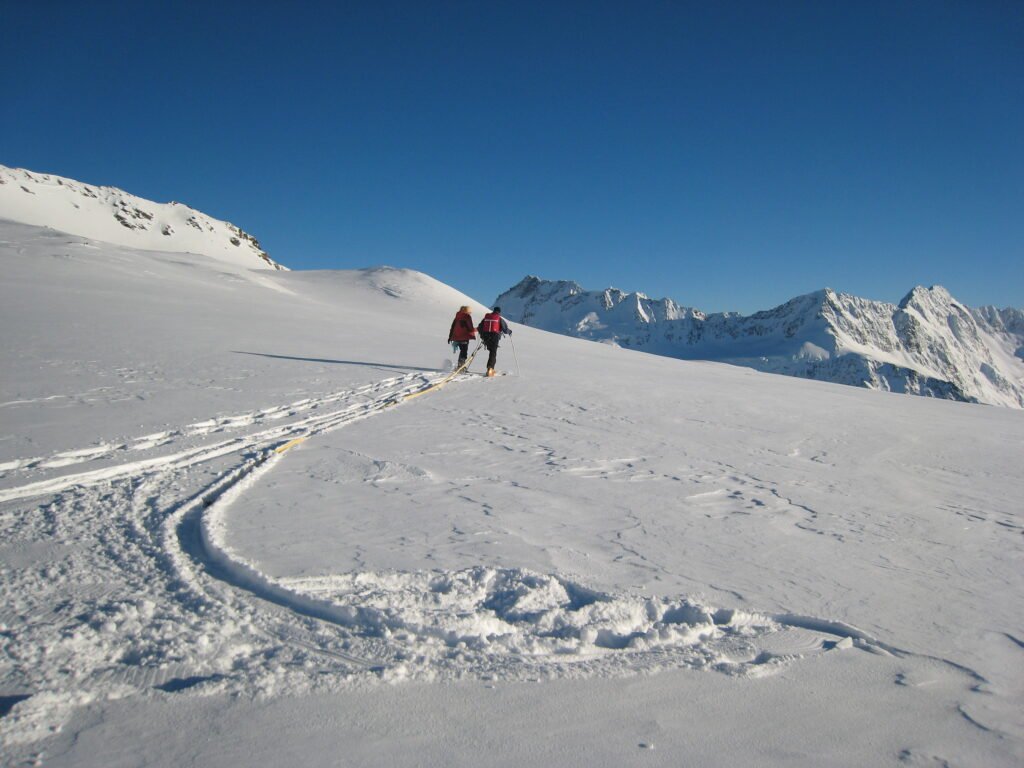
Ice cores are best obtained in very cold, flat ice caps or slow moving glaciers with relatively low precipitation.
Unfortunately the glaciers in New Zealand are mainly not very cold, they are low altitude, steep and with very high precipitation of rain or snow each year!
This meant that the expedition was as much about proof of concept as about gaining the best possible cores. Ideally we were hoping for ice cores that would contain a record going back over 150 years to pre european times before written weather recordings were made.
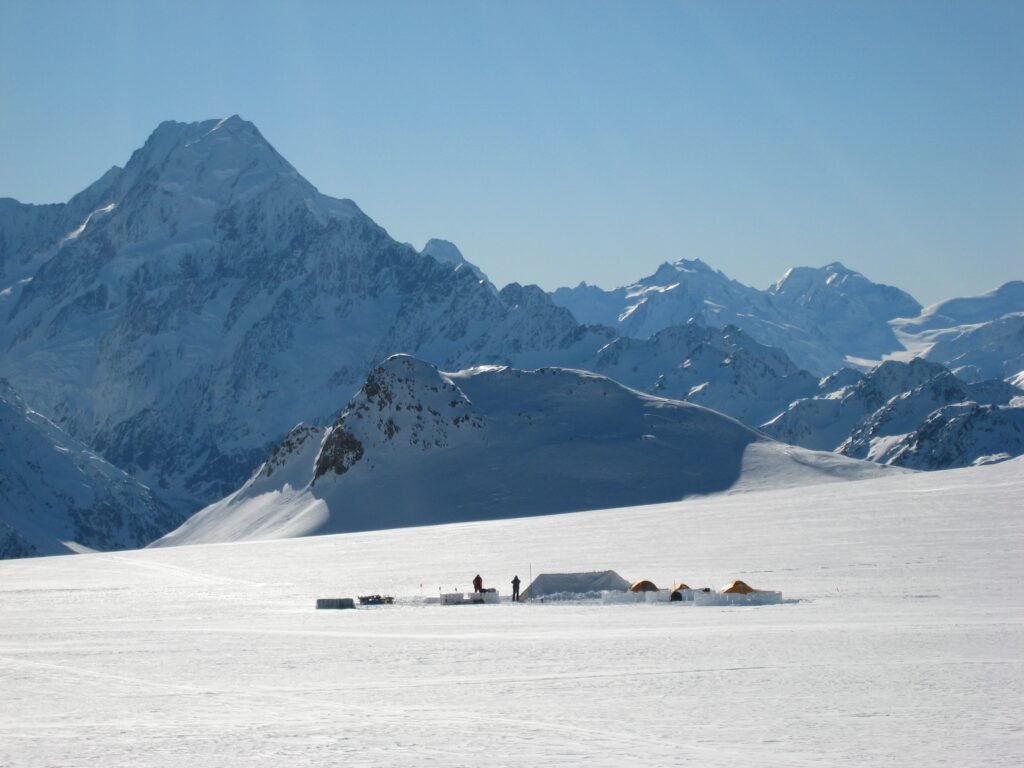
Our expedition aimed to drill at three drill sites in the Aoraki Mount Cook National Park: the Annette Plateau, Baker Glacier and Mt Hutton.
Our team included scientists from Maine University in the US and also from the Institute of Tibetan Plateau Research, Chinese Academy of Sciences who brought the ice core drill with them.
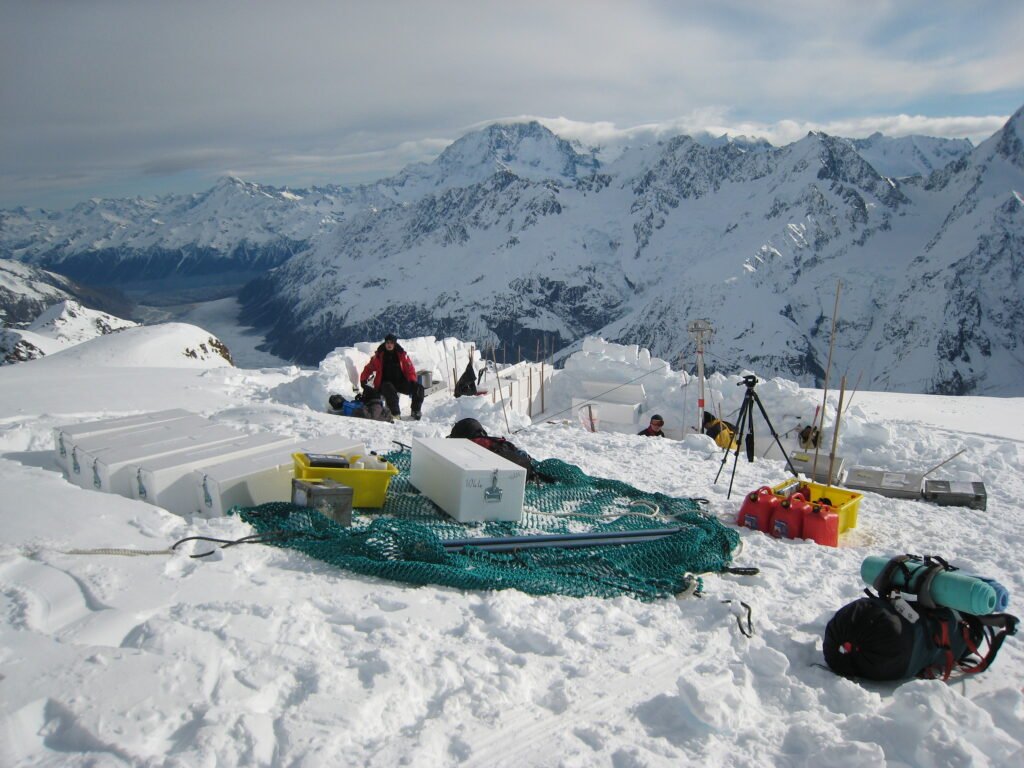
We planned our expedition to be in the winter so that the snow was as cold as possible. The isolated locations that we camped in for the drilling were remote and spectacular.
We made sure that we had plenty of warmth, high quality alpine expedition tents and lots of extra food and fuel just in case we might be trapped by bad weather and unable to fly down from the mountain for a period of time.
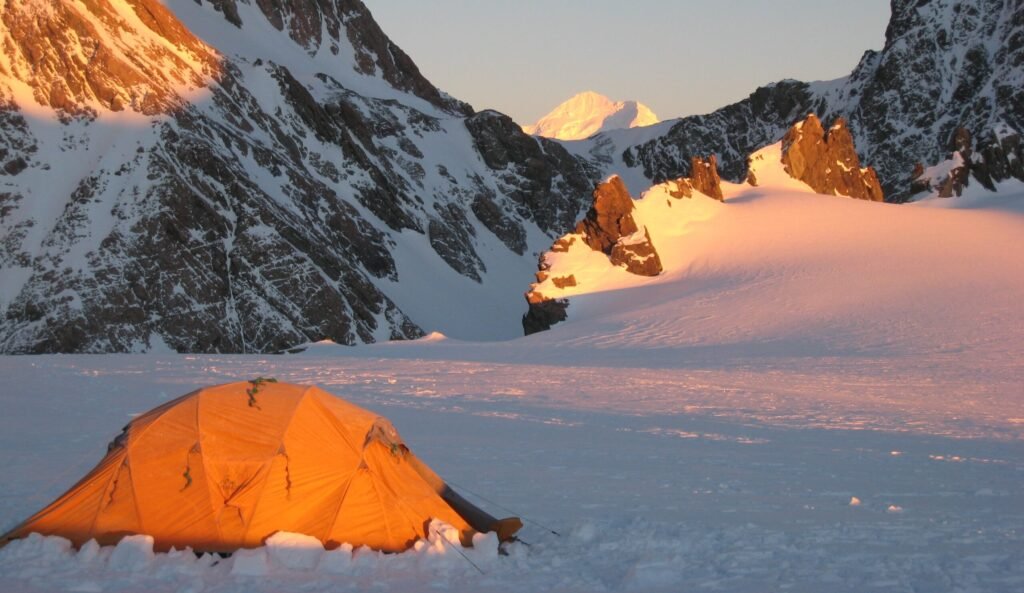
The drill had a hollow barrel so that as it rotated and cut its way down into the glacier, it would incorporate a cylinder of ice within it. Once we had drilled about a metre, the drill barrel was winched up to the surface to retrieve the ice which was put into special ice core plastic tubes, labelled and stored in insulated ice core boxes that we had specially made for event.
Mostly we drilled at night during the coldest hours. We would typically drill around 15m of ice per shift.
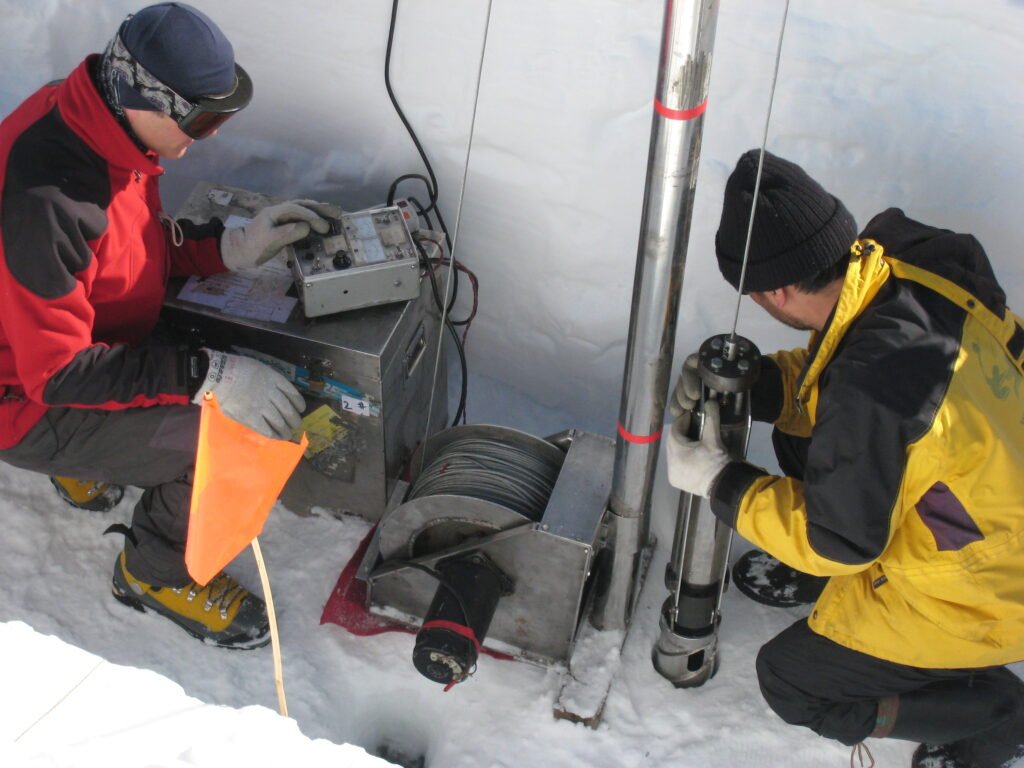
in this image I am holding a fresh ice core that Uwe has just pushed out of the hollow core barrel. The drill will now be lowered down the drill hole again so that drilling can continue whilst the ice core is measure and prepared for storage in one of the white ice core boxes, ready for transport.
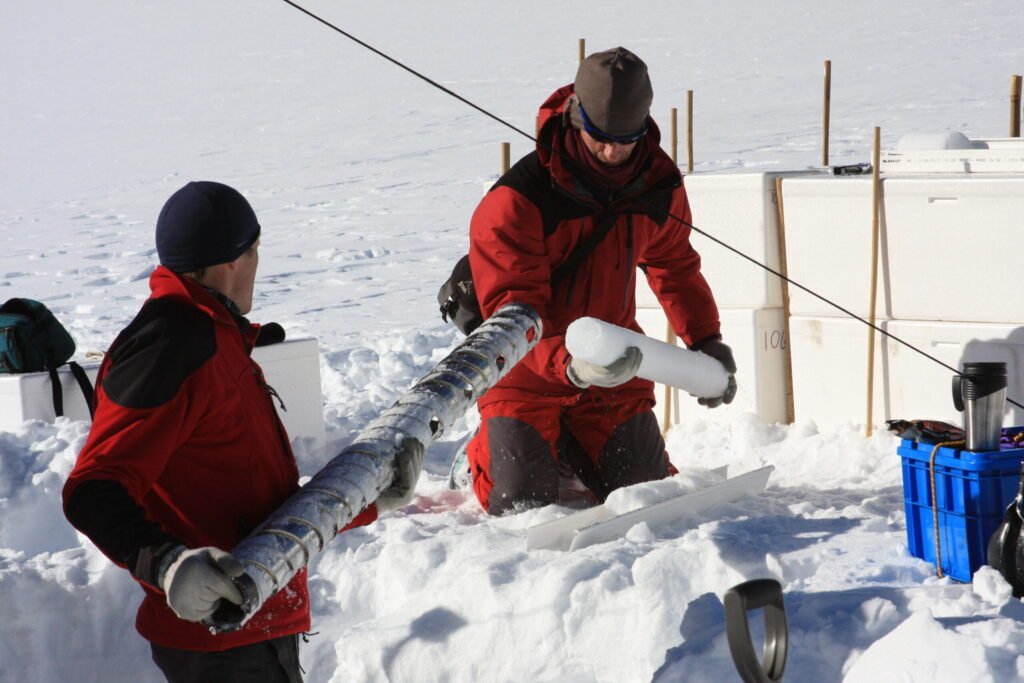
Another view of the drill camp on Baker Glacier, with Mount Tasman in the distance.
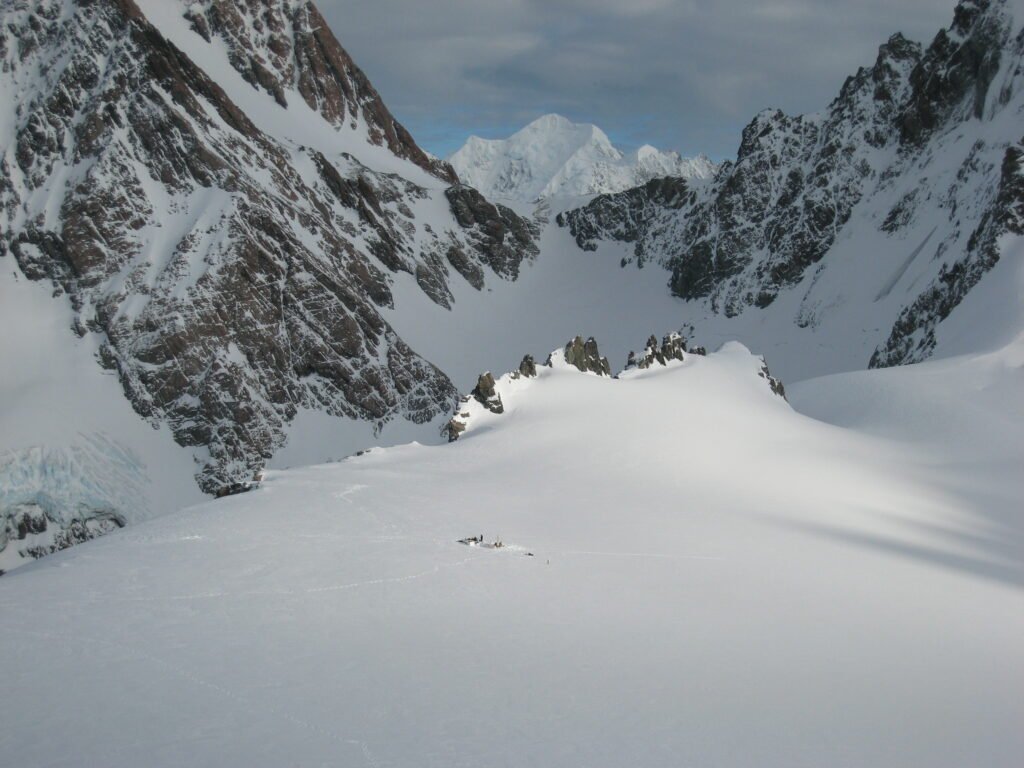
Taking a close look at an ice core from Baker Glacier.
Once they had been flown down to the airport, the ice core boxes were stored in a large freezer at the Hermitage Hotel, before being transported by freezer truck to the GNS ice core facility in Lower Hutt.
Although there was a lot of interesting information that could be found out during the analysis of the ice cores in terms of things like accumulation rates at the different locations, the time span that they covered was not as much as we had hoped due to the very high annual precipitation and accumulation of snow in the mountains.
The cores also showed quite a lot of mixing between the layers, due to meltwater percolation from the generally warm temperatures.
There are glaciated areas in the Southern Alps that are higher altitude (therefore colder) than the ones where we drilled. Unfortunately they are all too steep and too thin, so would not have enough ice to give any longer term records.
Here is an interview I did with Jim Mora on National Radio’s Afternoons programme
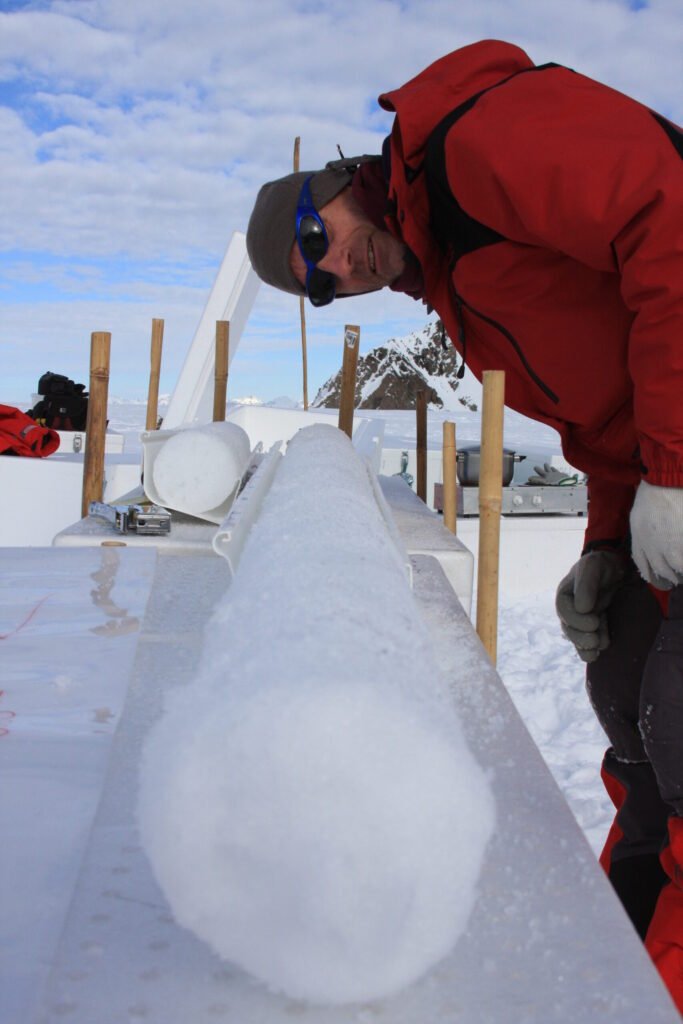
We also featured on a TV1 news item that was filmed whilst we were drilling on Mount Hutton:
